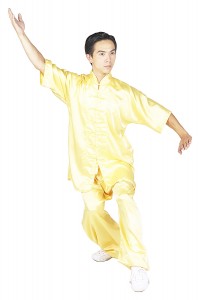When parrying with your arm, turn your waist
6,000 Reasons
I’ve been doing some number crunching lately.
In particular, on how many primary school children have attended my Pozitive Kidz are happy kidz program since it started three years ago.
That’s alot.
My program teaches 5-12 year olds how to build their self esteem from a Tai Chi perspective.
And it’s a humbling and satisfying feeling.
To know that I’ve been able to introduce the profound art of Tai Chi to young children and maybe have had some effect in helping them to feel better about themselves.
It’s certainly given me the opportunity to be creative with Tai Chi and it challenges me to adjust my presentation style according to the age group in front of me.
For example if they are very young I’m more animated, use simple language, keep them constantly occupied using different exercises. If they’re older I’m a bit more cool and mature.
If I taught Tai Chi the traditional wayI know the kids would be bored very quickly. [Read more…]
The Tai Chi Form
I was asked recently what is the ‘form’ in Tai Chi so I thought now would be a good time to do a post on it.
The word ‘form’ in Tai Chi can have different meanings so let’s clarify that now.
There’s the Tai Chi form and there are weapons forms such as sabre form, sword form, spear form and staff form.
I’ll focus on the generally accepted view of the ‘form’ as in the Tai Chi form.
The Tai Chi form is a series of mostly slow movements that are performed in sequence. See the clip below.
There are different syles or forms – the major ones are:
- Wu
- Yang
- Chen
- Sun
- Wu/Hao
There are two categories of forms:
1. The traditional form (long form)
- has 37 original postures ( e.g. Grasping the Bird’s Tail, Clouded Hands etc.)
- usually have 108 postures (movements) which include repeats of the 37 original postures
- about 15-20 minutes to perform, some are longer in duration
- 6-12 months to learn
2. Short Forms
- made up of postures from the traditional forms – could be any postures in any sequence
- 4 minutes or more in duration
- 6 or more weeks to learn
Tai Chi Tip #38
Find your opponent’s center – disguise your center
What's Tai Chi?
 What’s Tai Chi? A question I’m usually asked when Sue and I go out and run our facilitation workshops and ‘Pozitive Kidz are happy kidz’ programs.
What’s Tai Chi? A question I’m usually asked when Sue and I go out and run our facilitation workshops and ‘Pozitive Kidz are happy kidz’ programs.
Here is a basic explanation of what Tai Chi is.
Tai Chi Chuan is an exercise, relaxation, meditation, philosophy (non religious) and self defense system.
The five major areas of Tai Chi are;
- The Form
- Chi Kung/Nei Kung
- Push Hands
- Self Defence
- Weapons (the basic weapons are sabre, sword, staff, and spear).
Tai Chi is based on the 2000-year-old philosophy of Taoism.
The Taoists believed you could achieve a harmonious life by seeking the Tao (natural way).
In practical terms this means you need to harmonize your mind and body with nature before you can find the Tao.
From Taoism came the Tai Chi symbol of Yin and Yang . The white represents Yang (man, strength, day etc.) and the black represents Yin (woman, softness, night etc.).
The Yin and Yang are opposite forces or energies, which are in constant motion.
One of the many interpretations of Yin and Yang is in the area of good health.
We achieve good health when our Yin and Yang energies are balanced.
Tai Chi consists of a series of movements and postures that are performed in sequence to create what is called the ‘form’.
There are five major forms or styles of Tai Chi; Wu (Master Wu Chien Chuan), Yang, Chen, Wu (Master Wu Yuxian) and Sun.
Tai Chi Chuan translates to ‘supreme ultimate fist.’
- « Previous Page
- 1
- …
- 66
- 67
- 68
- 69
- 70
- …
- 79
- Next Page »
